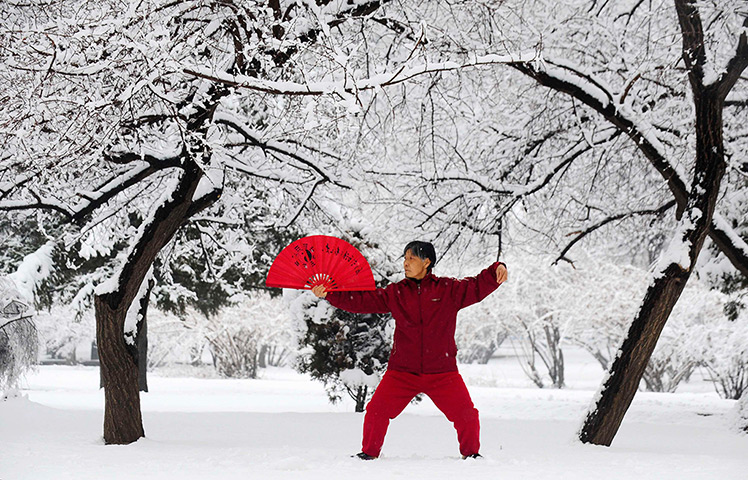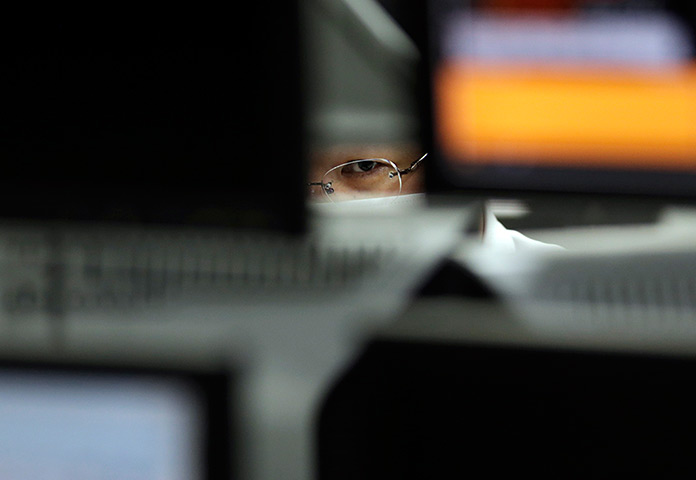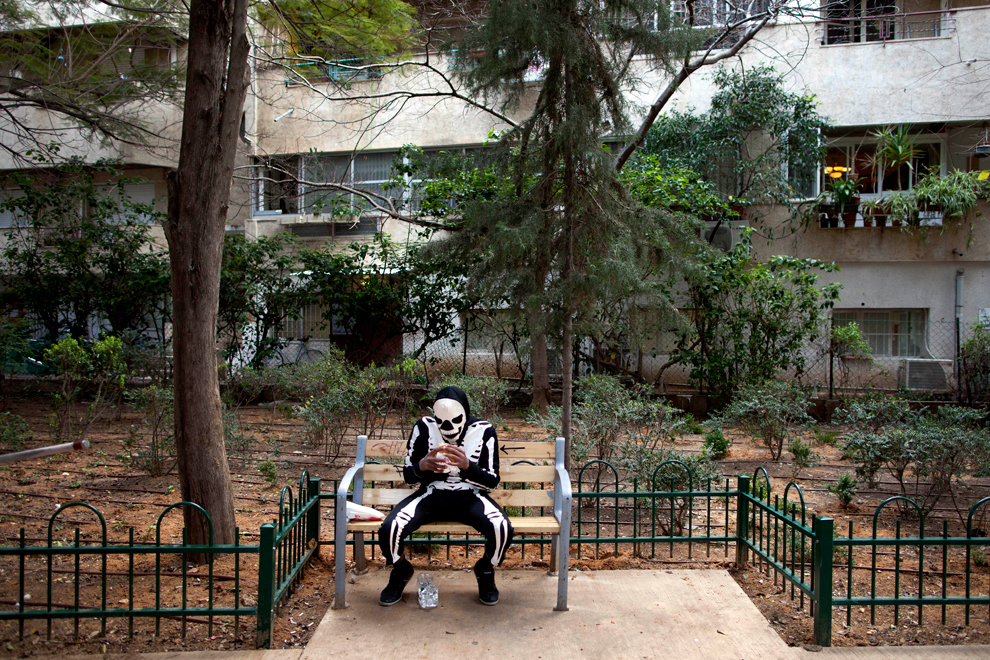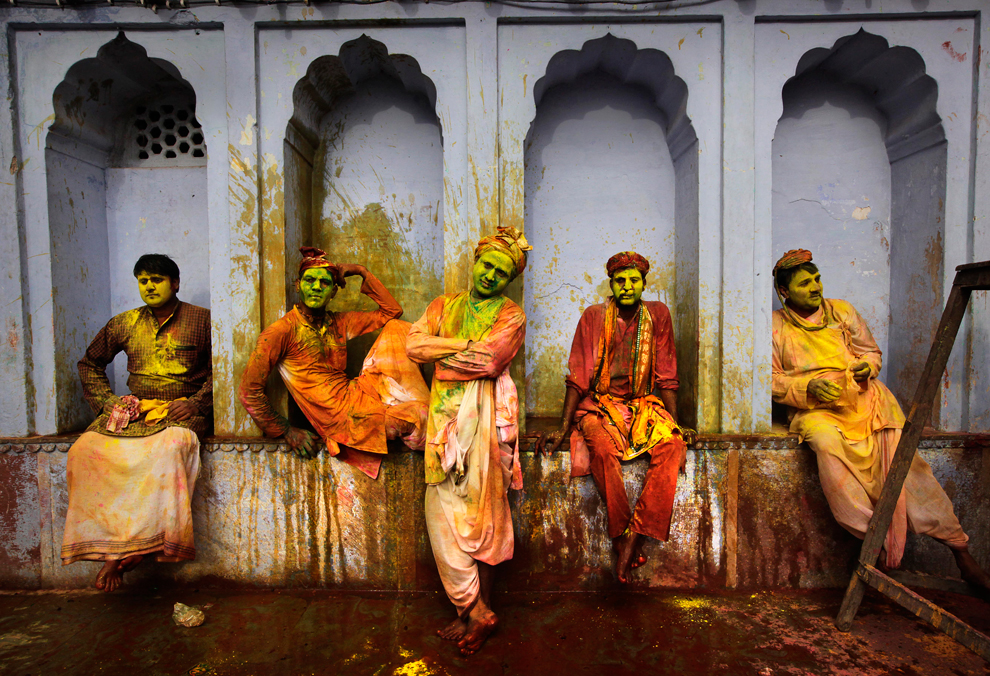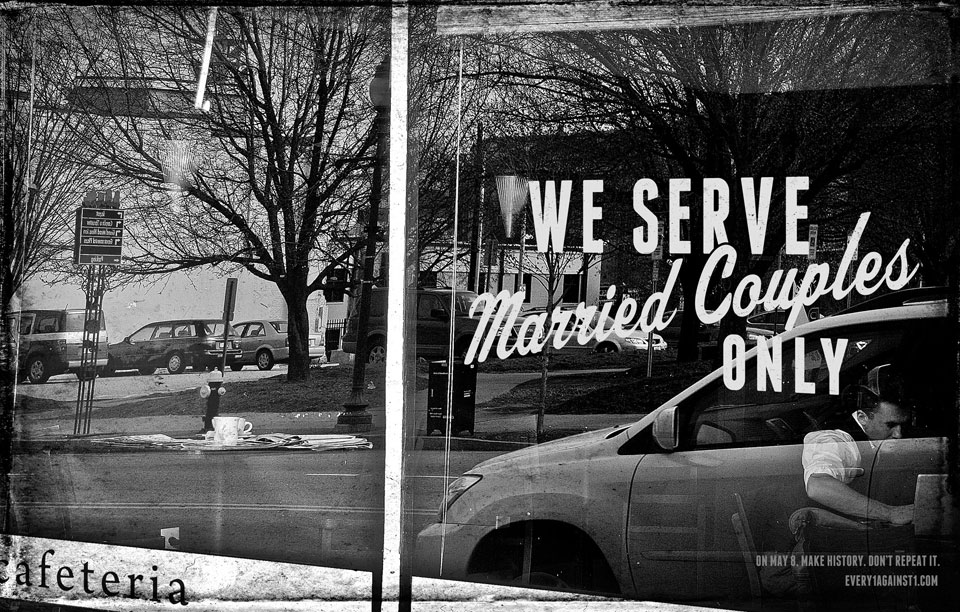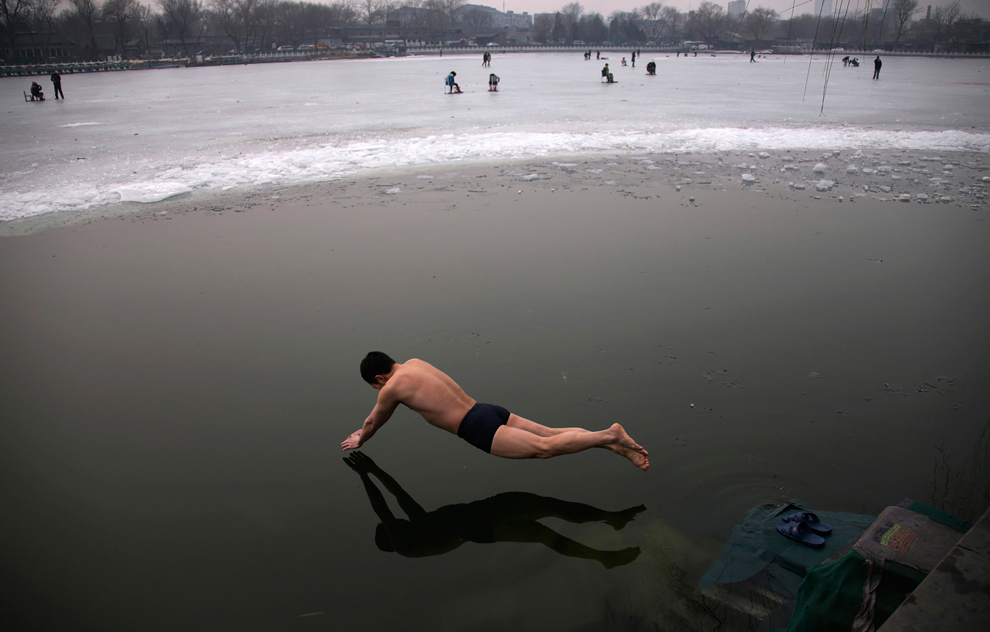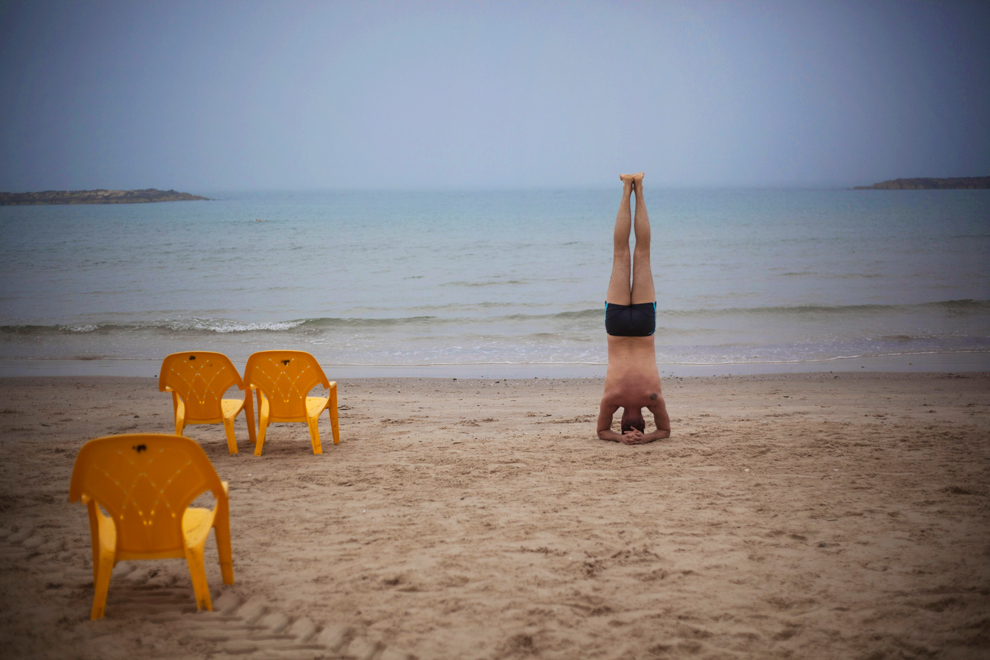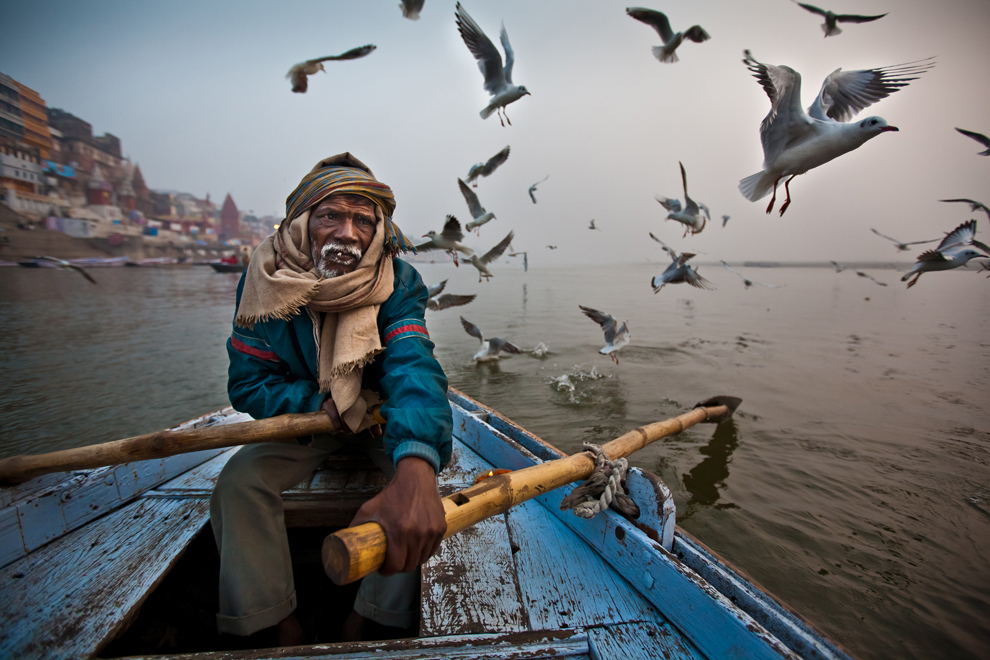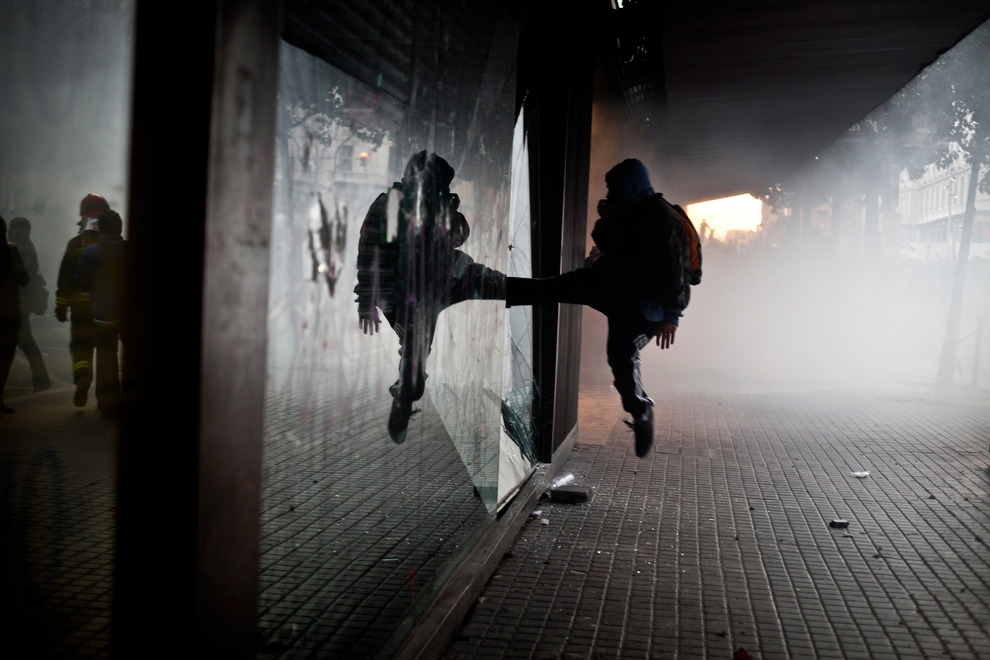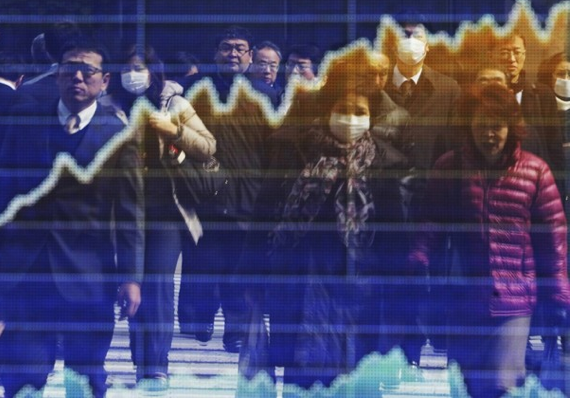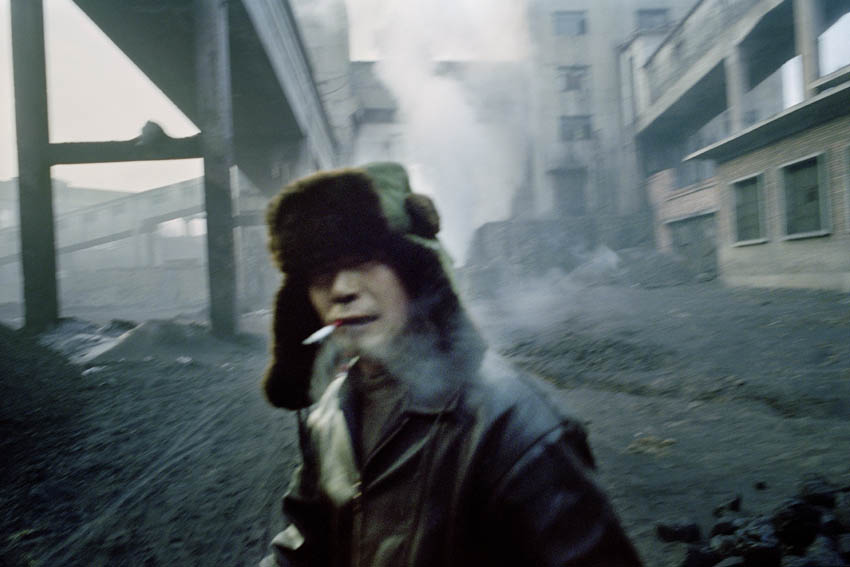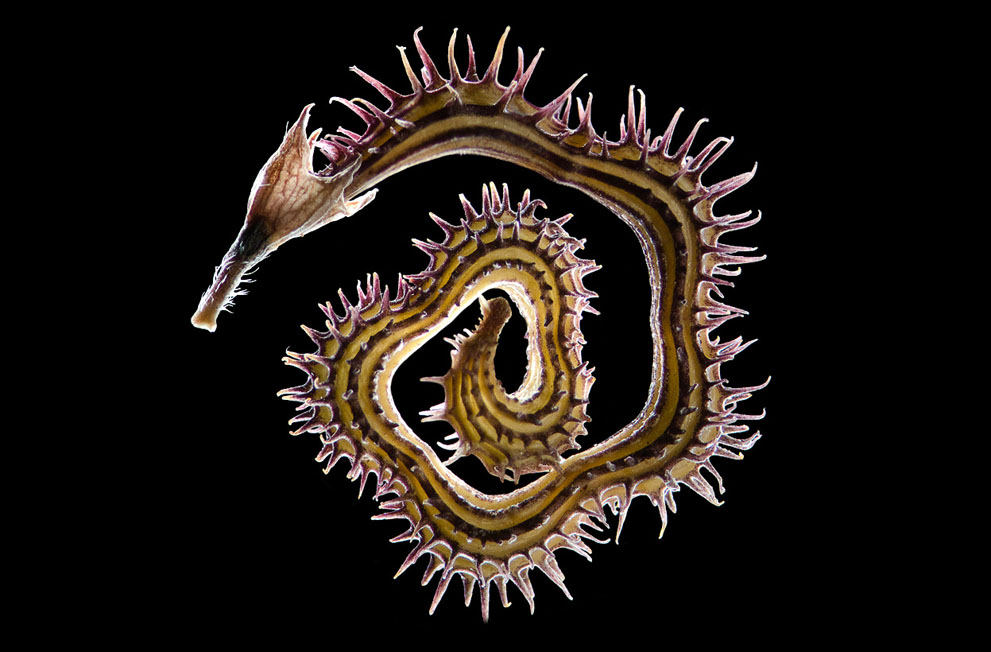Photography can’t represent everything, or many things, or perhaps even any one thing. It is profoundly emotional and relational, but that leaves a lot of thinking unaccounted for. If you want to know what it is like to work through a long set of logical problems, or go back and forth about a difficult decision, or understand the subtext in a negotiation, you should go elsewhere. When it comes to depicting mental complexity, one page of a Henry James novel does more than any hundred slide shows.
Even so, this binary between emotion and cognition also misses something, or many things, and perhaps even something important.
“A woman practices tai chi” in Shenyang, China. A human being is shown in a moment of controlled movement. Against a background of winter stillness, she creates an intentional act of repose. Feet apart, knees bent, arms lifted, hands cocked, head turned, every part of her stance was created through movement that has been momentarily stopped. She is a portrait of concentration, as she exhibits both mental focus and a gathering of energy.
This fine photograph is relatively unusual in that it takes us close to a moment of sheer consciousness. She is doing something, but in the absence of action and social context it seems close to doing nothing. Just as the winter scene of inert trees and snow around her seems to be doing nothing, although it actually is doing something as part of the wheel of the seasons. The difference between doing nothing and doing something in the landscape is filled in by our knowledge of natural processes. The difference between her lack of movement and her doing something is filled in by our recognition that her pose is intentional, deliberate, practiced, and all-absorbing.
Photographs can show so much about social relations, material conditions, and much else in the human world, but few get as close as this one to pointing directly toward consciousness itself. Although consciousness–that incredible, profound, yet evanescent subjective awareness–can never be seen as such, but it can be communicated, and sometimes even by an image.
And by considering how this photo may be unlike many others, we also can recognize how the many others are nonetheless like it. For if the photograph only points toward or takes us to the outer edge of consciousness, it also does something much more important, which is show us that mind (and mindfulness) is also embodied. The idea of pure thought or sheer awareness is itself largely a fiction–or shall we say an extension of one part of us at the expense of the rest. By acknowledging that the photograph above shows us embodied consciousness, thinking as it is realized in the controlled use of the body in an actual place with specific props, we can recognize that photography is doing that all the time. In fact, that is what it does exceptionally well: the traces and textures evident on the surface of things can be remarkable signs of how we are aware of ourselves and the world as we are living in and moving through it.
And for that reason, photography also can raise questions about what is happening to human awareness.
This image trades on the cliche that the eye is the window of the soul, but for good effect. “An employee at a foreign exchange trading company looks at monitors” in Tokyo, Japan. The photograph also is showing seeing (and for more on that concept see W.J.T. Mitchell’s book, What do Pictures Want?); thus, as above, we are cued to the intentional mental activity that can’t be seen directly. This, too, is a photograph of consciousness, and of embodied consciousness, although now the body is reduced to an eye. An eye, moreover, that sees through a lens while looking at several machines. Whereas the first image places the whole (albeit clothed) body in a garden, here we have the cyborg self–a scrap of face enclosed in a carapace of optical equipment. Consciousness, like seeing, is still the focal human experience, yet it also has been enhanced and dispersed through an apparatus of instrumentation.
But we were already there, of course. That’s what photography had already accomplished: placing each one of us within powerful technologies of vision and communication. Consciousness is embodied and machined, in the flesh and prosthetic. These are different states and significant tensions, to be sure, but perhaps it can be reassuring that photography is part of each, and that it can help us become more aware of our complexity.
And of how consciousness can be understood, extended, shared, and perhaps even found where we might not expect it. To that end, take another look.
Photographs by Sheng Li/Reuters and Toru Hanai/Reuters.
